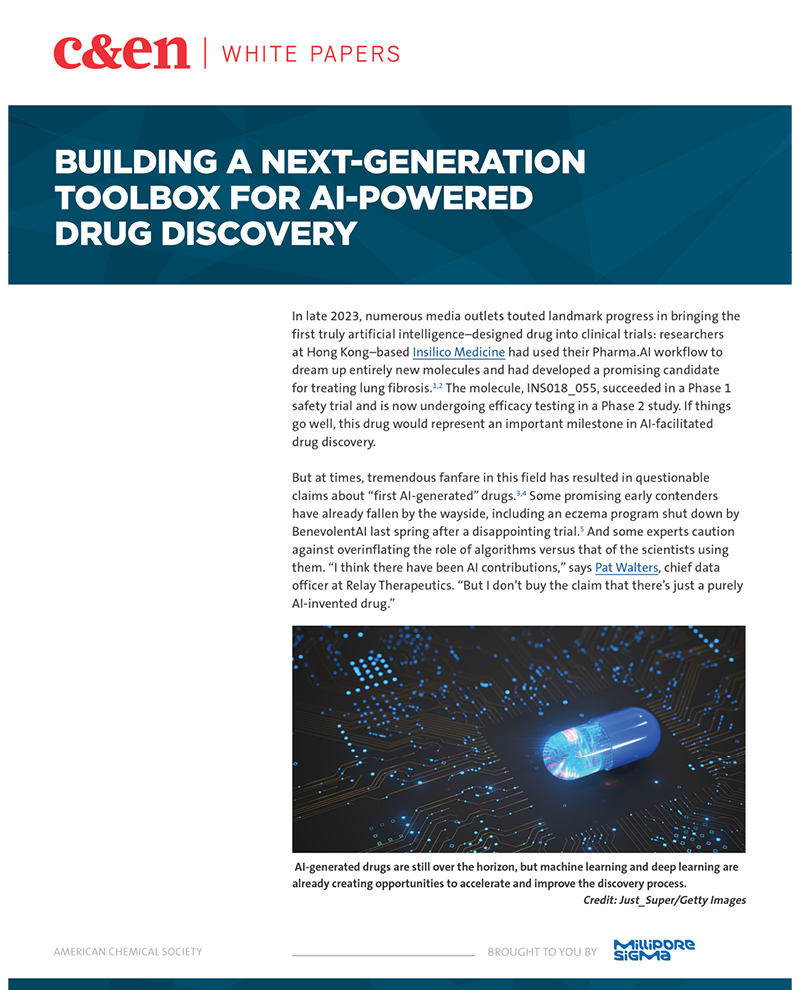
Building a next-generation toolbox for AI-powered drug discovery
Brought to you by MilliporeSigma
Overview

There’s no question that artificial intelligence (AI) is now embedded in the drug discovery process at a growing number of companies. Machine learning, deep learning, and generative AI can help scientists generate structures for new drug candidates and explore protein-ligand binding before starting any experiments in a wet lab.
Use cases for AI in drug discovery are still evolving, and AI-powered drug ideation still must overcome many hurdles before it becomes commonplace and reliable. Here’s the latest on how AI supports drug discovery.
Key Objectives:
- Machine learning (ML) and deep learning (DL) and methods for virtual screening of protein-ligand interactions
- Combining ML or DL with physics-based modeling techniques, such as free energy perturbation calculations, to assess ligand-protein binding
- Designing new molecules with generative AI
- Incorporating predictive ADMET at early stages of drug design
- Advancing algorithms with robust benchmarking and higher-quality training data
Brought to you by:

Please complete the form to download the white paper.
*MilliporeSigma, the vibrant M, and AIDDISON are trademarks of Merck KGaA, Darmstadt, Germany or it affiliates. All other trademarks are the property of their respective owners. Detailed information on trademarks is available via publicly accessible resources. The life science business of Merck KGaA, Darmstadt, Germany operates as MilliporeSigma in the U.S. and Canada.
*By submitting this form, you agree to receive more information on related products and services from the American Chemical Society (ACS Publications) and its sponsor via email. ACS takes your privacy seriously. For more information, please see the ACS Privacy Policy.
Copyright © 2025 American Chemical Society | 1155 Sixteenth Street NW | Washington, DC 20036 | View our Privacy Policy